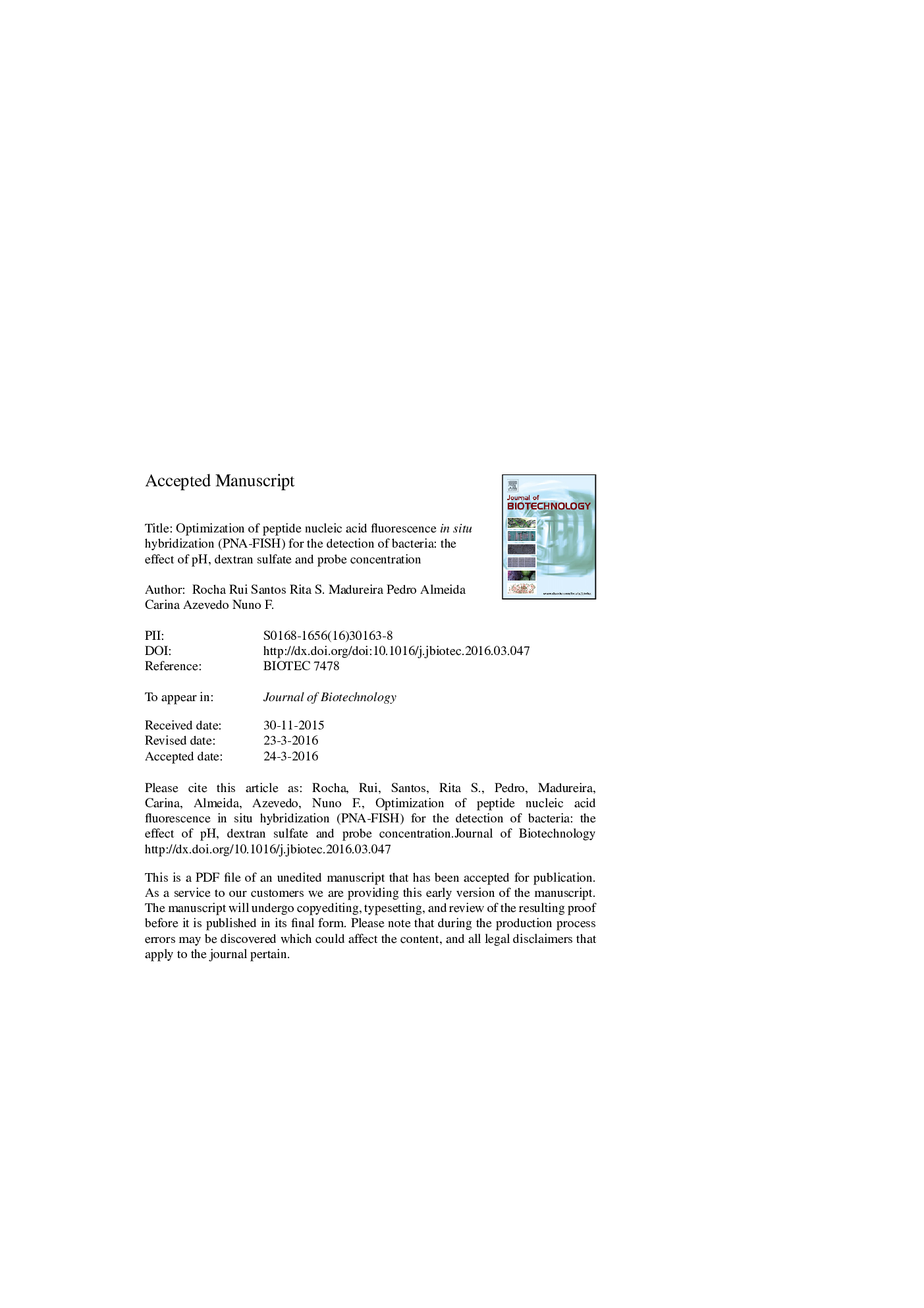| کد مقاله | کد نشریه | سال انتشار | مقاله انگلیسی | نسخه تمام متن |
|---|---|---|---|---|
| 6490581 | 43372 | 2016 | 34 صفحه PDF | دانلود رایگان |
عنوان انگلیسی مقاله ISI
Optimization of peptide nucleic acid fluorescence in situ hybridization (PNA-FISH) for the detection of bacteria: The effect of pH, dextran sulfate and probe concentration
دانلود مقاله + سفارش ترجمه
دانلود مقاله ISI انگلیسی
رایگان برای ایرانیان
موضوعات مرتبط
مهندسی و علوم پایه
مهندسی شیمی
بیو مهندسی (مهندسی زیستی)
پیش نمایش صفحه اول مقاله

چکیده انگلیسی
Fluorescence in situ hybridization (FISH) is a molecular technique widely used for the detection and characterization of microbial populations. FISH is affected by a wide variety of abiotic and biotic variables and the way they interact with each other. This is translated into a wide variability of FISH procedures found in the literature. The aim of this work is to systematically study the effects of pH, dextran sulfate and probe concentration in the FISH protocol, using a general peptide nucleic acid (PNA) probe for the Eubacteria domain. For this, response surface methodology was used to optimize these 3 PNA-FISH parameters for Gram-negative (Escherichia coli and Pseudomonas fluorescens) and Gram-positive species (Listeria innocua, Staphylococcus epidermidis and Bacillus cereus). The obtained results show that a probe concentration higher than 300Â nM is favorable for both groups. Interestingly, a clear distinction between the two groups regarding the optimal pH and dextran sulfate concentration was found: a high pH (approx. 10), combined with lower dextran sulfate concentration (approx. 2% [w/v]) for Gram-negative species and near-neutral pH (approx. 8), together with higher dextran sulfate concentrations (approx. 10% [w/v]) for Gram-positive species. This behavior seems to result from an interplay between pH and dextran sulfate and their ability to influence probe concentration and diffusion towards the rRNA target. This study shows that, for an optimum hybridization protocol, dextran sulfate and pH should be adjusted according to the target bacteria.
ناشر
Database: Elsevier - ScienceDirect (ساینس دایرکت)
Journal: Journal of Biotechnology - Volume 226, 20 May 2016, Pages 1-7
Journal: Journal of Biotechnology - Volume 226, 20 May 2016, Pages 1-7
نویسندگان
Rui Rocha, Rita S. Santos, Pedro Madureira, Carina Almeida, Nuno F. Azevedo,